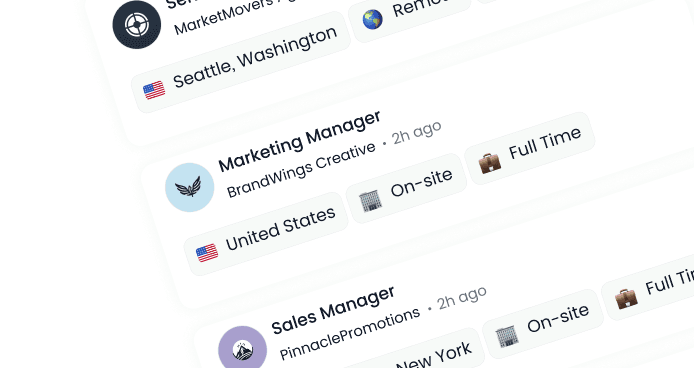Understanding AI for Diversity Hiring
Published:
October 14, 2025
All
AI Recruitment
Recruiting Tips
Employer Branding
Candidate Experience
Workforce Planning
AI isn’t just changing how we hire — it’s helping companies build more diverse, inclusive teams.
Did you know that 87% of companies worldwide now use AI-based tools in the hiring process, with over 65% of recruiters reporting that they use AI to benefit candidate sourcing and hire more cost-effectively? As AI becomes more integrated into the hiring process, the potential of this technology to increase diversity and inclusion in recruitment has never looked brighter — but so has the potential for bias to spread it. In this article, we explore how AI can actually enable diversity hiring, the challenges that need to be considered, and how to strike a balance between technology and human oversight to ensure fair outcomes.
Why Diversity in Hiring is Critical Today
Corporations are starting to understand that besides the ethical considerations to having a diverse workforce, having varied talented people can actually have better business outcomes. For example, in some studies it has been found that companies with greater diversity are found to be more innovative, adaptable and profitable. Also, today’s job seekers and the upcoming generations want to see more fair and transparent hiring practices by companies.
Despite these advantages, traditional hiring remains handicapped. One of the basic problems behind obsolete hiring practices are unconscious bias. For example, recruiters might tend to focus on where a person graduated from or if they look the part for the job. What this means is that people coming from backgrounds that are not considered the norm, might get left out; even though they might have the skillset and expertise required to do the job much better than others.
That is where AI when properly trained and designed, can provide the insights and solutions to assist removing unconscious bias, while managing scaling of business requirements.
Using AI in Removing Unconscious Bias
Job Descriptions Assisted by AI
Language has a powerful impact on who applies for a job. In spite of being fully qualified, certain phrases could deter women or minority applicants. Utilizing AI-powered job descriptions can ensure that biasness due to language that can make certain minorities or genders from applying be avoided. This ensures that job postings are more accessible, helping employers tap into a diverse talent pipeline from the outset.
Ranking & Screening in a Fairness Constrained Manner
One of the largest criticisms of recruitment is that resumes are frequently evaluated based on proxies (for instance, the candidate's name, institution, or even the location they live) that might be correlated with bias. AI systems can remove the need for traditional applications, instead looking at skills, qualifications, and measurable achievements.
Furthermore, training of algorithms with fairness constraints is possible. It further requires the model to revise its weighting of applications in a way that ensures that underrepresented candidates are given a fair proportional consideration. As researchers at Chicago Booth point out, this technique can increase diversity in interview pools without introducing significant efficiency tradeoffs (chicagobooth.edu).
AI in Early Interviews & Matchmaking
AI is also used in the interview process. Video analysis tools can help to make early-round interviews consistent, limiting subjective bias. Similarly, AI-powered job boards and platforms can pair candidates to positions based on a stronger skills assessment - meaning it would match candidates who wouldn't be considered otherwise because their resume wasn't the 'normal' format.
This helps to make factoring in candidates fair, switching the focus from who you know to how good your resume is, to what they can actually do.

Creating a Diverse Talent Pipeline
AI helps to transition from passive recruiting to active talent building. "Instead of waiting for candidates to come to them, employers can use AI sourcing tools to search larger networks, professional communities and even niche platforms where underrepresented talent is active."
For example, AI can help recruiters find candidates who may not have all the "preferred" qualifications but show great potential and transferable skills. It will expand access and create opportunities for talent that can be weeded out in traditional systems.
Employers can also use AI analytics to understand where the candidates are dropping off of the hiring funnel. If data reveals that women are getting to interviews but not receiving offers, or that applicants with disabilities are exiting the process midway - each of these signals points to where there is room for improvement in equitable hiring practices.
The Potential & Dangers of AI in Diversity Recruiting
While AI can make us more fair, it isn't free of the risks, either:
Bias in training data: If historical hiring decisions were biased towards certain demographics, an AI model trained on this data may perpetuate or even strengthen these biases.
Language and disability barriers: AI interviews have difficulties with multiple languages and using the automatic recognition of speech, a study in 2025 in Australia warned that the error rates reached up to 22% for non-English speakers and individuals with speech disabilities.
Over-reliance on automation: Automation, despite its great potential, can be too dependent on technological choices without human context, transparency, and compassion. Additionally, without explanations about the behavior of these systems, candidates might also end up distrusting opaque ones that seem to have been employed by the company.
Best Practices for Equitable Hiring When Using AI
To achieve maximum benefits and minimize risks, employers should keep the following general ideas in mind:
Representative data sets should include a wide range of candidates to prevent perpetuating historical disparities.
Regular audits: Hold regular audits for bias using metrics such as representation ratios and subgroup performance.
Human-in-the-loop: Recruiters should be involved in each step of the decision process. AI should help suggest - Not decide.
Transparency: Clearly communicate to candidates how and when AI is used and offer appeal mechanisms.
Compliance: Keep abreast of AI-related laws pertaining to hiring. For instance, AI recruiting tools in New York City have to go through annual bias audits before deployment.
By incorporating these steps, employers can responsibly implement hiring fairness technology solutions and achieve long-lasting results in diversity.
In Conclusion
Artificial intelligence is a powerful tool that when properly trained and designed can assist in making hiring processes more inclusive, fair and scalable. Utilizing AI job descriptions, can help avoid common unconscious bias. Whereas utilizing artificial intelligence for resume, screening and scheduling can assist in scaling and ensuring that larger pools of talent are accessible.
However, this process requires active oversight, transparency, and the recognition that AI is an aid - not a replacement for human judgment.
Want to hire smarter and fairer? Leverage DigitalHire's AI tools to automate the recruitment process and build a diverse and equitable workforce.
FREE JOB POST
Looking to fill a position quickly? Post your job for free and reach top talent today!




